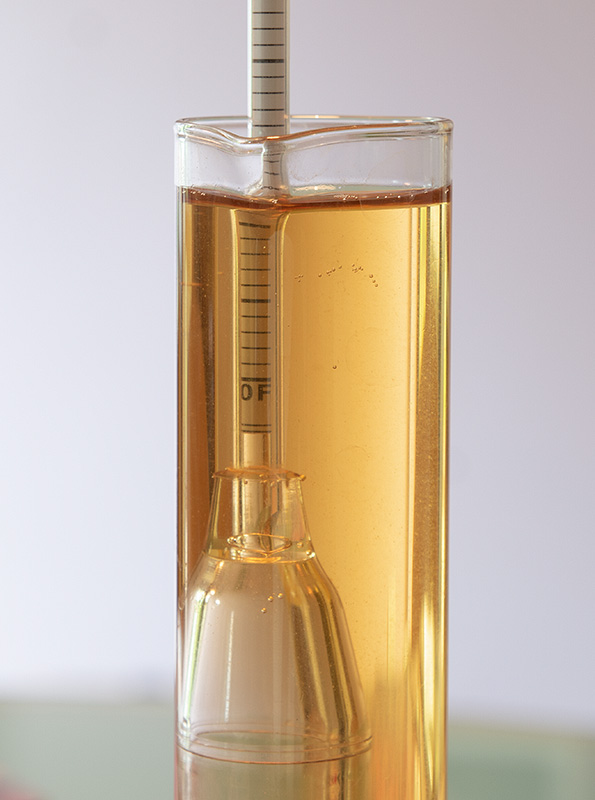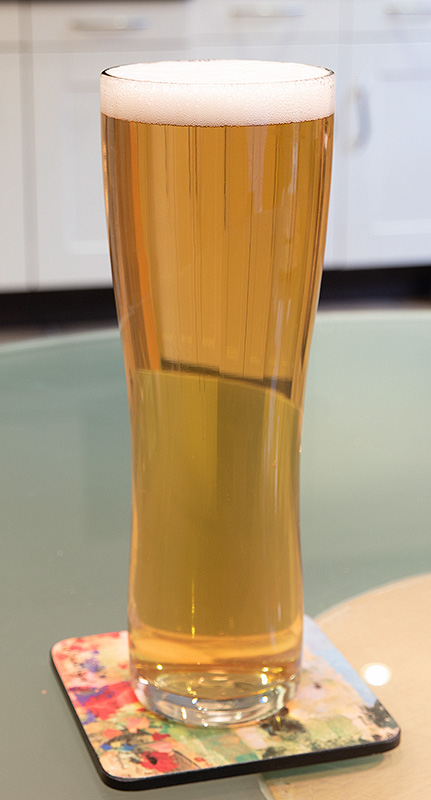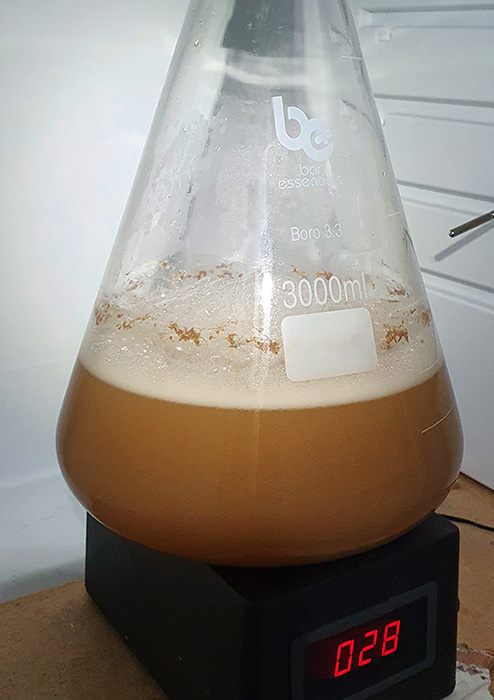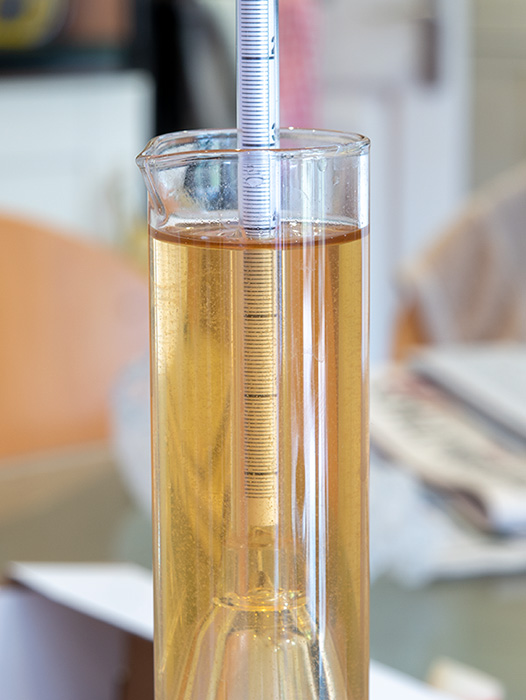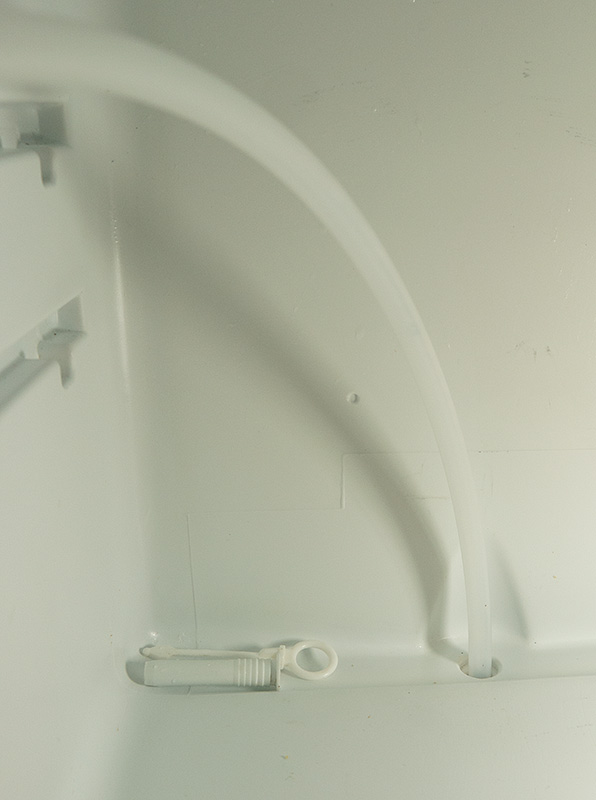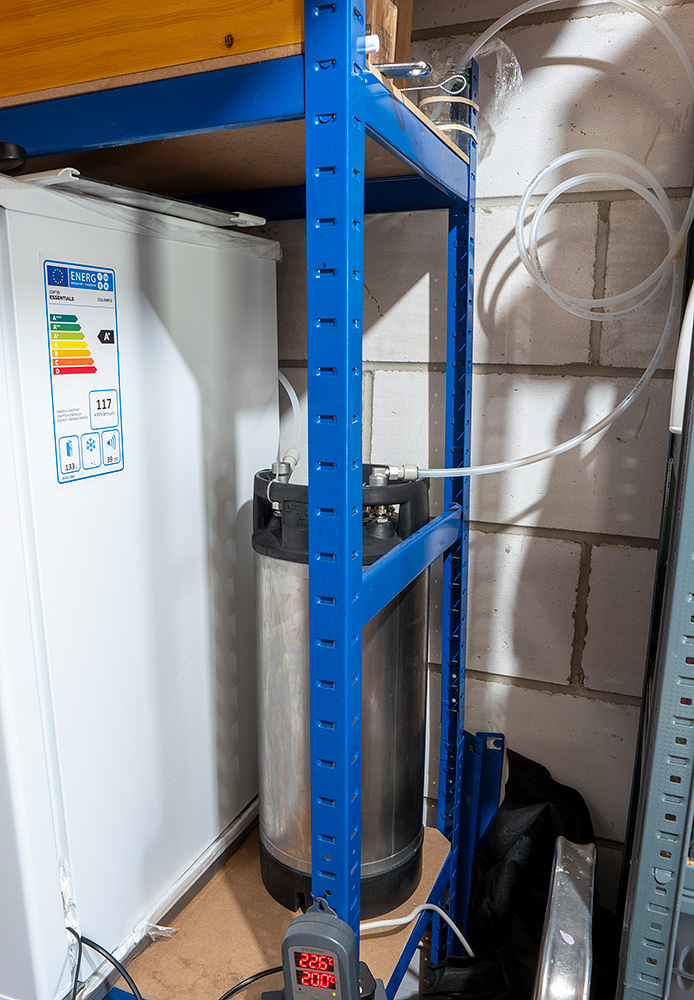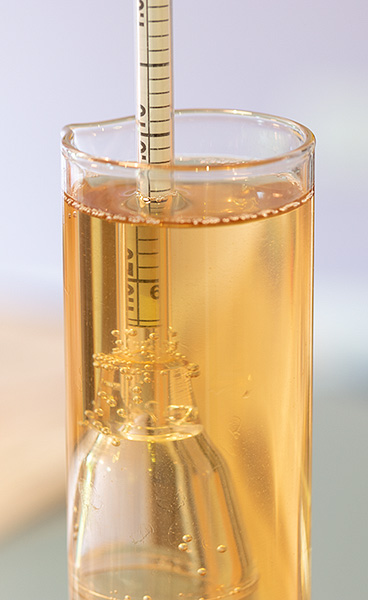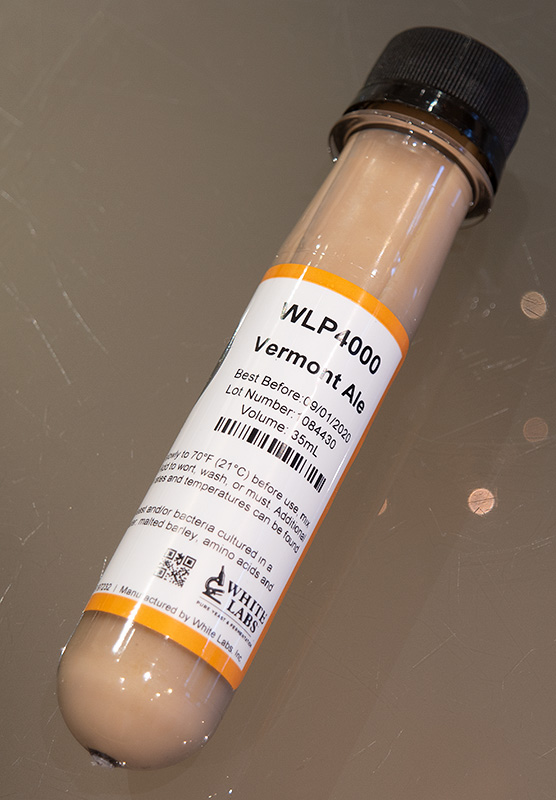I do BIAB and I squeeze the bag as hard as I possibly can so my pre-boil wort is very cloudy from flour as you can probably see from the pre-boil sample. During the boil (a very gentle simmer) a lot of this coagulates on the surface and I skim it off.How do you get it that clear from the kettle? I can't get that clarity from the fermenter! Have to condition for a month to get close! (Jealousy really)
At 7 mins I add a whirlfloc tablet (sourced from Geterbrewed). I think this is the biggest helper because after rapid chilling (30 mins) I can see all the trub being pulled to the bottom of the kettle and I transfer all of this to the fermenter - perhaps having this Whirlfloc in the fermenter aids clarifying after fermentation? I don't know.
I also pay careful attention to my water minerals and pH. I always brew with Tesco Ashbeck and adjust with minerals and lactic acid to the style I'm trying to brew. I don't know how much this affects clarity but there's definitely some evidence on the US forums that link water treatment to the clarity of the finished beer.
Last edited:





